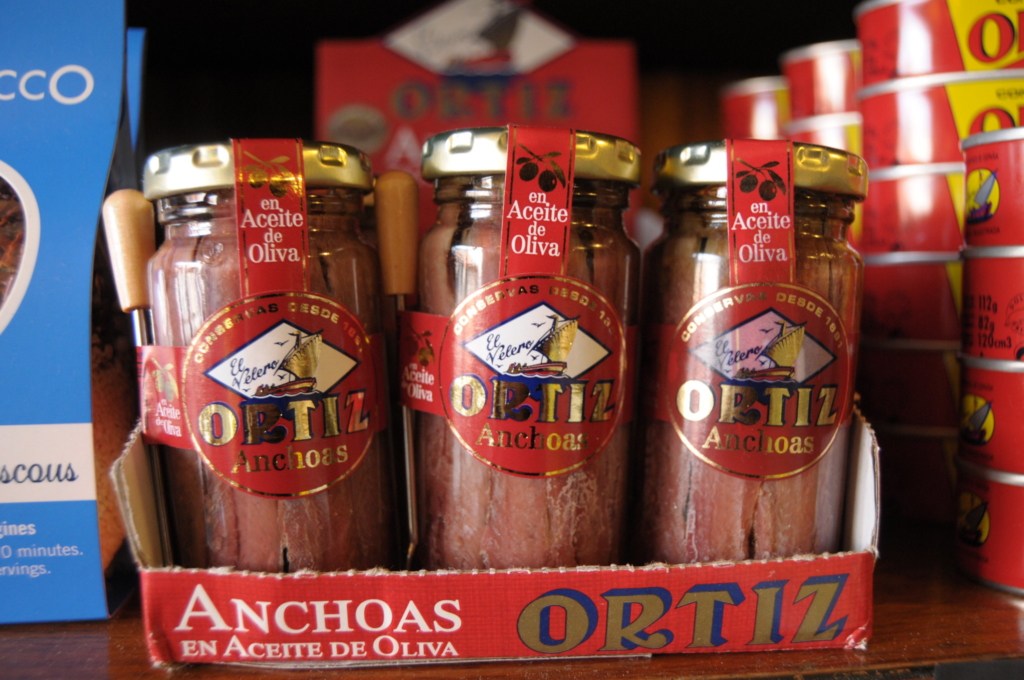If asked, you’d be hard-pressed to find an ingredient more divisive than anchovies. We’re here to talk about how extraordinary and versatile this salty little fish actually is.
For super fans of this oily fish variety, anchovies can add a beautiful, salty depth of flavor to salad dressings, pasta sauces, and much more. On the other hand, the fish’s overt brininess can sometimes rub people the wrong way (especially if it’s not used properly). When in the right hands, though, anchovies can bring a beautiful round flavor to your cooking and help give your dishes that extra oomph they’re missing.
History

Anchovies are small saltwater fish that are classified into two major groups: the Engraulis (genus groups that live in Mediterranean and European regions) and Anchoa (species that live in North America). To date, there have been 144 different species of anchovies discovered for study and commercial uses, with the main areas of production focused in Italy, Spain, and France.
Most Italian anchovies are fished from April to September in areas of the Mediterranean surrounding Sicily, where they appear often in the local cuisine. While Italian anchovies are petite and delicate in nature, Spanish anchovies are fished from the Atlantic ocean and are known for their larger size and rich flavor. Unlike Italian anchovies, Spanish varieties are typically harvested during the winter and appear in a variety of preparations in traditional Spanish tapas.
Production

Italian anchovies fall into two particular categories. Acciughe, or anchovies that have been cured in either salt or oil, are the most common type of anchovy. They’re often found canned in tins or glass jars, making for easy preservation and storage processes. Alici—a fresh preparation of anchovies—are much rarer outside of Italy, due to their poor ability to hold up during long periods of transportation. For both, the sooner the preparations begin after the fish is caught, the better.
Acciughe anchovy fillets are prepared by gutting the fish and brining them in a salt mixture to preserve them, which begins to break down the skin, transforming it from a bright silver to a browner, red color. Additionally, the curing process imparts an intensity of flavor to the fish, providing it with its signature taste. Once matured, the fillets are then packed for transport in either oil or salt, or in the case of the Spanish boquerones en vinagre, pickled in a vinegar solution with garlic, olive oil, and parsley.
Flavor

Anchovies are prized for their briny, salty flavor, commonly used to add umami to the bases of soups, sauces, and stews. However, differences in flavor appear as you move from variety to variety. As mentioned earlier, Spanish anchovies tend to be larger and richer in flavor, making them the perfect option for whole preparations topped with herbs and lemon juice. On the other hand, Italian anchovies add the delicate fishiness for which the fish is most widely known.
In most cases, dishes that use anchovies rarely have a fishy taste to them. In fact, most people who say they dislike anchovies are unaware of how often they eat them. Nonetheless, if the intensity of anchovies proves to be too much for you or one of your guests, we recommend mellowing the flavor through the use of fat and/or acid, such as in an aioli with garlic and lemon juice. Similarly, incorporating anchovies into the early stages of the cooking process allows more time to mellow out the flavor.
Types

Fresh Anchovies
For fresh anchovies, look for bright eyes and a lack of smell to judge their quality. If the flesh smells strongly of fish, the filet is past its prime. Be careful with transporting the fish, as the flesh is very soft and can bruise easily.
Packed in Oil
For oil-packed anchovies, processing begins with a salt brine to clean and preserve the fish. After the curing process (which can take up to two months), the fish are cleaned again, filleted, and packed into tins or jars with olive oil. We recommend oil-packed anchovies for adding a quick depth of flavor to any dish, such as tomato sauces, pastas, or even pizza.
Packed in Salt
To preserve the fresh flavor of the anchovy, salt brining begins shortly after the fish are caught. Once cured, the fish are then covered with salt and packed tightly into tins. Although praised for their flavor, salted anchovies involve a bit more work than their oil-packed brethren, as their preparation requires the chef to filet, dry, and soak them in oil once opened. However, if you have the time to spare, salted anchovies are the way to go.
Anchovy Paste
Probably the most common preparation in kitchens across the country (and definitely the most affordable), anchovy paste is brined fish processed with a mixture of vinegar, spices, and water (although we prefer more straight-forward pastes with just salt and oil added). Most versions are stored in squeezable tubes, making the product easily accessible when specific amounts are needed in a recipe.
Our Recommendation: Amore All Natural Anchovy Paste, 1.6 oz, $2.79
Anchovy Sauces & Condiments

The history of fermenting anchovies into concentrated sauces harkens all the way back to ancient Greece, with a product called garum, a savory condiment that helped add flavor to otherwise bland dishes. Since then, a wide variety of cultures have used fermentation to turn the humble anchovy into sauces that serve as a flavorful staple in cuisines across the globe. Examples include Southeast Asian fish sauces such as Thai nam pla, Korean aekjeot, Iranian mahyawa, and the ever-so-difficult-to-pronounce Worcestershire sauce, a fermented sauce originally created in the city of Worcester in Worcestershire, England, during the first half of the 19th century.




Very useful and makes me want to give anchovies another chance.